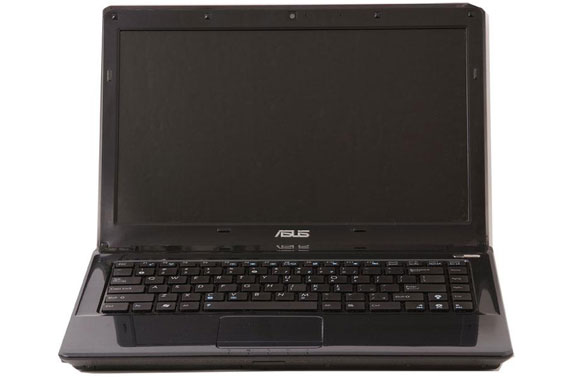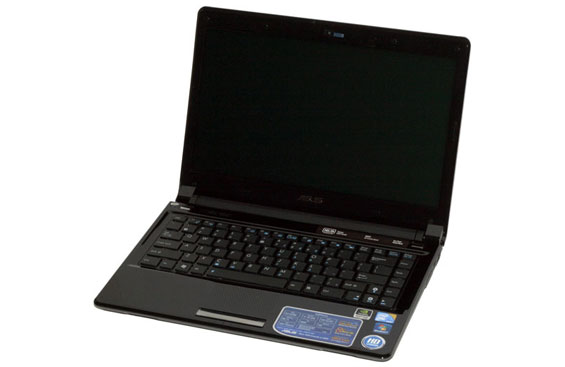Mobile Buyers' Guide: 14" and Larger Notebooks and DTRs
by Dustin Sklavos on June 30, 2010 12:53 AM EST
Portable Notebook: ASUS K42J
We'll start by horning in on a little bit of Vivek's territory: choosing a portable powerhouse. ASUS actually has a healthy history of producing 14-inch notebooks with performance characteristics that frankly shame their larger kin. Yours truly has owned two of these beasts (an A8Jm and an X83) and can attest to their quality and performance. Midrange graphics in a 14-inch machine? Yes please.

Our pick for the most portable performance machine goes to the ASUS K42JV-X1, available at Newegg for the princely sum of $949. This tiny terror comes equipped with an Intel Core i5-450M running at a nominal 2.4 GHz clock speed on both cores (2.66GHz with Turbo), 4GB of DDR3 RAM, a 500GB 7200RPM hard drive, and a GeForce GT 335M with 1GB of DDR3 video memory. The GT 335M is equivalent to the desktop GeForce GT 240, but with a reduced shader count (72 instead of 96) and the lowered clocks that are par for the course for mobile graphics.
While we don't have hands on experience with this particular model, its predecessors have been traditionally reliable and popular machines that have offered middling battery life but outstanding overall performance. The low resolution screen (1366x768) and lack of ExpressCard or FireWire make the K42 a tough sell for multimedia work, but for raw performance and portability it's a very tough nut to crack.
Portable Runners Up: ASUS UL80Vt and Alienware M11x

The K42 may use more full-bodied, luscious mainstream processors, but if you demand greater portability you'll be looking toward notebooks utilizing Intel's CULV platform. In that instance, the 14-inch UL80Vt line certainly fits the bill. It's last generation in every sense, using a Core 2 Duo and switchable GeForce G 210M instead of a modern Core 2010 chip and Optimus-enabled NVIDIA hardware, but it's reviewed well and you can pick it up for $700 these days. The UL50Vf was essentially the same system but with a 15.6" chassis and Optimus, but the 14" model was far more interesting. Odds are ASUS has a refresh of this notebook on the way, so it may not hurt to hold out and see what shakes loose. Other alternatives from ASUS include the UL30Jc—it's a 13.3" unit that packs a much more potent CPU, though the GPU isn't at the same level as the K42.

If you want to go simultaneously smaller and bigger, the Alienware M11x is universally beloved even by reviewers that ordinarily hate gaudy Alienware machines (such as yours truly.) With the M11x, Alienware produced something no one else had: an authentic gaming netbook. This one horns in on Vivek's territory, too, but if you're of the belief that more of less is more and are willing to take the hit to processor power, the M11x makes a convincing case as an alternative to the very similarly equipped K42. The original M11x used switchable graphics with an overclocked Core 2 SU7300, similar to the UL80Vt; an updated model with Arrandale ULV and Optimus is now available on Alienware's site—we're still waiting for our review model, but there's no reason the new unit shouldn't surpass the original in every important metric.
Frankly, we'd like to see more Optimus laptops with reasonable GPUs (like the K42Jv above—why doesn't it have Optimus?), but most of those will fall into the ultraportable category so we'll save further discussion for next week. The U30Jc had all the goods but still needs more than a 310M if you want gaming performance. The M11x refresh looks to be the most potent Optimus laptop out there right now, which is why we had to make room for it even if this isn't the ultraportable guide.










63 Comments
View All Comments
Dustin Sklavos - Wednesday, June 30, 2010 - link
If you're willing to spend up that much, Sony's 13.1" Z series can be upgraded to a 1080p screen. :)bji - Thursday, July 1, 2010 - link
Thank you for that information. I was unaware of that model and it looks very interesting. The only drawbacks are the glossy screen and the non-fanless CPU. But it's definitely got the weight and the pixel count going for it. I wish it were 14 inches ...hko45 - Wednesday, June 30, 2010 - link
The Dell Studio 17 might be okay, but for a DTR graphics WS, I'd take the Precision M6500 any day. Besides having the i7-920XM, up to 16 GB of RAM, USB-3, Nvidia Quadro FX 3800M card, and WUXGA RGBLED, you can also use the available E-Port Plus docking station when you're at home base with its 2 DVI and 2 DP ports for multiple displays.JarredWalton - Wednesday, June 30, 2010 - link
The Precision M6500 is a huge step up in price, mostly because you have to go with higher end options. I would agree build quality is better, but for many multimedia people the Quadro cards aren't necessary. You can get the RGB LED 1080p on the Studio 17 with 720QM for ~$1300 with a 3-year warranty. The cheapest quad-core M6500 is going to run upwards of $2500. Worth it for some? Definitely. But you want to make sure you really need those upgraded components.hko45 - Wednesday, June 30, 2010 - link
The real selling point for me is the availability of the E-Port Plus docking station for the Precision lineup. While I may be willing to make-do while on the road, coming home to two calibrated monitors to do my main PhotoShop post processing is the deal maker. I do my "dream" shopping on the main Dell site to see what configuration options are available, and then I keep checking on the Outlet page until something acceptable comes up.Incidentally, another reason to go with the Precision (or Vostro or Latitude) is ProSupport, which I don't think you can get on Dell's consumer side. Give me real English-speaking NA support any day.
hko45 - Wednesday, June 30, 2010 - link
Jared,I forgot to comment on your Quadro remark. Ever since CS4 (CS5 now), PhotoShop takes full advantage of the (Nvidia) GPU. Apparently Adobe worked quite closely with Nvidia so any on my WS configs will only use Quadro boards.
JarredWalton - Wednesday, June 30, 2010 - link
True... CS5 is CUDA accelerated while CS4 was OpenGL. I haven't done testing enough to say how much difference a fast GPU makes in Photoshop, likely because I just don't do enough complex editing. I also don't know if Quadro makes a difference relative to regular GeForce. Anyway, the M6500 is a good workstation with an awesome RGB LED display, but it's expensive. If you want the extras, though, I have no complaints with it.Dustin Sklavos - Wednesday, June 30, 2010 - link
It honestly doesn't, really, at least in my experience. It's also my understanding Photoshop CS5 is still just OpenGL accelerated (a run through the settings didn't have anything CUDA on it, just OpenGL which is improved further still here); Premiere and After Effects have some CUDA acceleration, but those two are my babies, and the CUDA-accelerated processes are fairly specialized. I use a Radeon HD 5870 in my main workstation, and not having CUDA functionality isn't keeping me up at night.The primary use for workstation-class graphics is still going to be Maya and similar software.
hko45 - Thursday, July 1, 2010 - link
I turned off the use-GPU setting in PhotoShop just to see whether I'd notice the difference. Big difference. It also doesn't hurt that it's able to take advantage of all the RAM you can throw at--the case for 64-bit OS (and the M6500 can give you 16 GBs). Don't you get tired of water twirly things marking the passage of time?Again, I especially like the Precision Mobile WS because it can use the E-Port Plus which has the two DVI and two DP ports for my dual monitors. Admittedly, biggest bang for the GPU capability comes with the Mercury engine in video processing (and who's to say that I won't get more serious with video). However, I've seen enough of what Adobe has done with PhotoShop's ability to use the GPU to bet on the direction its going in its close relationship with Nvidia.
I don't know about you, but I'd prefer to buy a mobile WS that won't get too outdated within three years.
Dustin Sklavos - Thursday, July 1, 2010 - link
Yeah, but remember, in Photoshop it's just OpenGL and largely dependent on available video memory. No Nvidia secret sauce there.We have a GTX 480M notebook getting reviewed right now, I'll check to see just how big of a difference the Mercury Playback Engine might have (if it can be enabled on the 480M at all), but I can tell you I don't feel like I'm missing anything using Premiere on my Radeon, and Premiere IS my bread and butter.